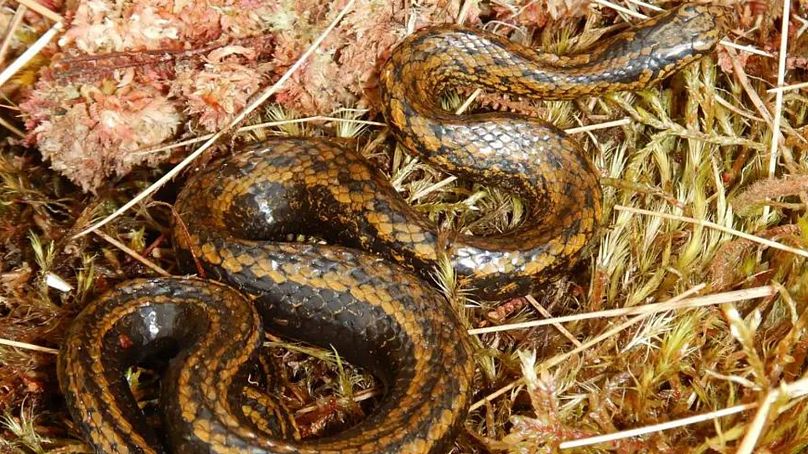Indiana Jones: "Snakes. Why'd it have to be snakes?"
Harrison Ford's legendary Indiana Jones character may have hated snakes, but the actor now has a reptile named after him.
Researchers from Germany, the United States and Peru have discovered a new species of snake in Peru’s Andes mountains and named the variety after veteran screen legend Harrison Ford.
The only specimen, a male, was discovered sunbathing in 2022 in Peru's Otishi National Park. It is a slender snake, measuring a modest 16 inches (40.6cm) when fully grown, and is not harmful to humans.
The German Society for Herpetology and Herpetoculture (DGHT) announced the naming of Tachymenoides harrisonfordi to recognize the Hollywood actor's environmental advocacy.
"These scientists keep naming critters after me, but it's always the ones that terrify children," Ford said jokingly in a statement. "I don't understand. I spend my free time cross-stitching. I sing lullabies to my basil plants, so they won't fear the night."
Ford was referring to the fact that in 1993, a new species was named after Ford - the Calponia harrisonfordi, which is a California spider.
The 81-year-old actor did thank the researchers for this recent honour: "In all seriousness, this discovery is humbling. It's a reminder that there's still so much to learn about our wild world - and that humans are one small part of an impossibly vast biosphere.”
"On this planet, all fates are intertwined, and right now, one million species are teetering on the edge of oblivion," added Ford. "We have an existential mandate to mend our broken relationship with nature and protect the places that sustain life."
One of the researchers, Edgar Lehr, a professor of biology at Illinois Wesleyan University, said: “For a biologist, describing a new species and making it public with its new name is one of the most vital activities during the biodiversity crisis.”
“We hope the new snake will create awareness about the importance of biological fieldwork that intends to discover the unknown - often an adventurous and expensive process requiring more financial support from funding agencies. Only organisms that are known can be protected.”












